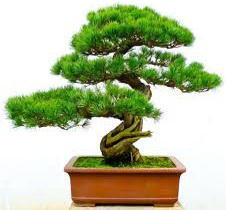Friday, July 26, 2024
SPORT WITH MUSIC AND DANCE
Thursday, July 25, 2024
AFRICAN STORY
Wednesday, July 24, 2024
PLANTED IN A CONTAINER
Tuesday, July 23, 2024
DO YOU KNOW
What happens when you sneeze?
Sneezing is your body’s way of expelling foreign matter such as dust, pollen or smoke from the nostrils to prevent them from travelling to the lungs and causing harm. When the delicate lining of your nose detects one of these contaminants it instantly sends an electrical signal to the brain.
The brain sends signals to all the parts ofthe body that are needed to help you sneeze. Your chest muscles, diaphragm, abdominals, vocal cords and the muscles in the back of your throat all work together to help expel the irritant.
In most cases, your eyes are forced shut, the tongue moves to the roof of the mouth and the muscles brace for the sneeze.
Sneezing pushes water, mucus, and air from your nose with an incredible force and in the process the foreign matter is removed.
Monday, July 22, 2024
SCARY MYTHICAL CREATURES
Sunday, July 21, 2024
ON THE OCCASION OF GURU POURNIMA
Story of Upamanyu
Saturday, July 20, 2024
ARTICLE
Palm Oil In India And Its Health Effects
Oil palm is a crop that flourishes in the same regions as some of the world's most precious rainforests and appears in many food and household products.
Palm oil has emerged as the main global source of vegetable oil, forming nearly 33 per cent of the world's production mix. Palm oil is in nearly everything – it's in close to 50% of the packaged products we find in supermarkets, everything from pizza, doughnuts and chocolate, to deodorant, shampoo, toothpaste and lipstick. It's also used in animal feed and as a biofuel in many parts of the world
Indian Palm Oil Market
According to WWF, India is the world's largest importer of palm oil, driving 23 per cent of total global demand from plantations in Indonesia and Malaysia. Palm oil is the most consumed edible oil by volume in India, with a share of ~40%, followed distantly by soybean and mustard oils. Palm oil market size in India was valued at USD 5.16 billion in 2015. Increasing demand for edible oils owing to the burgeoning population and improving economic conditions is anticipated to remain the key growth driving factor over the forecast period. Edible oil emerged as the dominant application segment in India. Palm products are widely being utilized as cooking medium in India as there is limited availability of oilseeds, and it's cheaper pricing.
Biochemical Composition of Palm oil
The palm oil mainly contains palmitic acid, which is a saturated fatty acid. Other fatty acids are myristic, stearic, linoleic acid. Palm oil also contains vitamins, antioxidants and other phytonutrients.
Is palm oil bad for you?
Palm oil has a high saturated fat content, which can be harmful to cardiovascular health. However, one study (Odia et al., 2015) found that, when consumed as part of a balanced diet, “Palm oil does not have incremental risk for cardiovascular disease.”
What are saturated fats?
From a chemical standpoint, saturated fats are simply fat molecules that have no double bonds between carbon molecules because they are saturated with hydrogen molecules. Saturated fats are typically solid at room temperature.
How do saturated fats affect health?
Replacing foods that are high in saturated fat with healthier options can lower blood cholesterol levels and improve lipid profile environment effect. To produce palm oil, the fruit is collected from the trees, which can live an average of 28 to 30 years. To keep up with the incredibly high demand for the cheaply produced oil, acres of rainforest are being cut down - leading to a loss of animal habitat for endangered species.
A Lesson from the Buddha
LIVING IN THE PRESENT Once, while the Buddha was delivering a sermon, a man walked up to him and, without uttering a single word, spat on h...

-
ANNABELLE The real Annabelle doll is a well-known case of alleged paranormal activity, made famous by Ed and Lorraine Warren, two well-know...
-
WHY IS SUGAR WATER STICKY? Sugar water is sticky because sugar molecules have a strong affinity for water molecules, forming hydrogen bonds ...
-
A MAN AND THE BLIND BOY A blind boy sat on the steps of a building with a hat by his feet. He held up a sign which said, "I am blind. ...


















